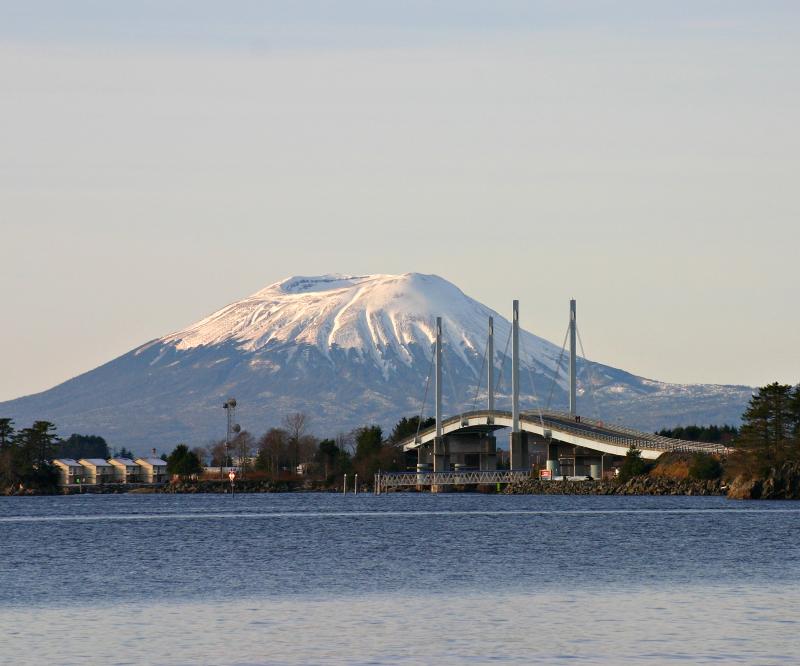Mount Edgecumbe volcanic field changes from "dormant" to "active" -- what does that mean?
The Mount Edgecumbe volcanic field (MEVF) is now classed as "historically active" by the standards of the Alaska Volcano Observatory (AVO) because it is experiencing deformation related to the presence of magma intruding three miles below the surface.AVO defines an "active" volcano as a volcanic center that has had a recent eruption or a period of intense deformation, seismic activity, and/or fumarolic activity that likely reflects the accumulation of magma in the crust below the volcano. Note that this definition does not require an actual eruption and instead uses eruptions as well as measurements of magma beneath a volcano. AVO uses the term "historical" to mean within the past 300 years and the beginning of written records in Alaska. It is important to note that the Indigenous oral histories of Alaska cover a far greater period of time. As our geologic understanding of Alaska's volcanoes improves through additional fieldwork and modern radiometric-dating techniques, our understanding of past activity will continue to evolve.

The Alaska Volcano Observatory prefers to classify volcanoes as to when they were most recently active, and previously labeled the MEVF as "Holocene", meaning that we thought the most recent activity at Edgecumbe was within the past ~11,700 years. (For more information on divisions of geologic time, see this publication: Divisions of Geologic Time - Major Chronostratigraphic and Geochronologic Units). However, with our recent observation that magma is likely intruding underneath Edgecumbe, the Alaska Volcano Observatory now classifies the MEVF as "historically active."
For more information on the Mount Edgecumbe volcanic field:
The AVO home page for Mt. Edgecumbe has information about activity and geology, as well as maps and images. For near-real-time data on Mount Edgecumbe, please visit the Current Activity page. As AVO's monitoring capability increases for Edgecumbe, we will add instruments to this page.
The April 22, 2022 Information Statement about recent activity is on AVO's site HERE.
AVO also has social media accounts to follow for information on all Alaska volcanoes. On Twitter @alaska_avo, on Facebook at facebook.com/alaska.avo, and on Instagram @alaska_volcano_observatory.
The United States Geological Survey (USGS) operates the Volcano Notification System (VNS) that sends notification emails about volcanic activity happening at US monitored volcanoes. You can customize the VNS to only deliver notifications for certain volcanoes, or a range of volcanoes, as well as choose the separate notification types you want to receive including emails or text/SMS.
The Mount Edgecumbe volcanic field is on Kruzof Island, which is within the Tongass National Forest and managed by the US Forest Service.